Sebaceous hyperplasia is a common skin condition that affects many people, especially those over 40 years old. It is characterized by the appearance of small, raised bumps on the face, particularly on the forehead, nose, and cheeks. While this condition is generally harmless, it can be unsightly and may cause anxiety in some individuals.
In this comprehensive guide, we will delve into its underlying cause, its symptoms, and treatment options for sebaceous hyperplasia. Understanding Sebaceous Hyperplasia
What is Sebaceous Hyperplasia?
Sebaceous hyperplasia is a common, benign skin condition that affects the sebaceous glands. These glands are found in the skin and produce sebum, an oily substance that lubricates the skin and hair. Sebaceous hyperplasia occurs when the sebaceous glands become enlarged and produce too much sebum, resulting in small, yellowish or flesh-colored bumps on the skin.
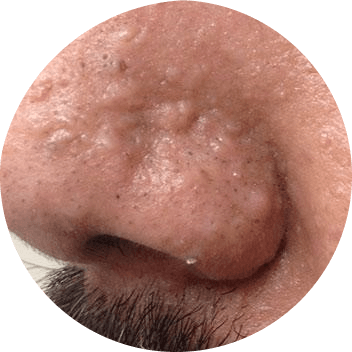
The bumps are typically round or oval in shape and have a central depression or pore. They are most commonly found on the face, especially on the forehead, cheeks, and nose. Sebaceous hyperplasia is morecommon in middle-aged and older adults, but it can also affect younger people.
Although sebaceous hyperplasia is not a serious medical condition, it can be a cosmetic concern for some people. While the bumps may be unsightly, they are generally painless and do not require treatment unless they cause discomfort or embarrassment.
Causes of Sebaceous Hyperplasia
The exact underlying cause of sebaceous hyperplasia isnot fully understood, but there are several factors that may contribute to its development. The following are some possible causes:
- Genetics: Sebaceous hyperplasia may have a genetic component, as it tends to run in families.
- Hormonal changes: Fluctuations in hormone levels, such as those that occur during puberty or pregnancy, may trigger the development of sebaceous hyperplasia.
- Age: Sebaceous hyperplasia is more common in middle-aged and older adults.
- Sun exposure: Chronic sun exposure can damage the skin and lead to the development of sebaceous hyperplasia.
- Skin damage: Any damage to the skin, such as from acne or other skin diseases, may increase the risk of developing sebaceous hyperplasia.
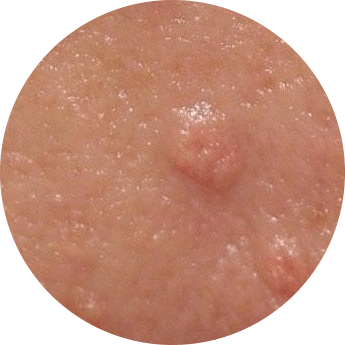
While these factors may increase the risk of developing sebaceous hyperplasia, the condition can also occur in people with no known risk factors.
Triggers of Sebaceous Hyperplasia
There are external triggers that can worsen the condition or lead to the formation of new lesions. Some triggers of Sebaceous Hyperplasia include:
- Exposure to sunlight: Sun exposure can trigger the development of sebaceous hyperplasia, especially in people with fair skin.
- Certain medications: Long-term use of medications such as steroids, androgens, and immunosuppressants can trigger sebaceous hyperplasia.
- Poor skincare: Improper skincare, such as using harsh cleansers or over-exfoliating, can cause irritation and inflammation that can trigger the development of sebaceous hyperplasia.

Understanding both the underlying causes and triggers of sebaceous hyperplasia is important for effective management of the condition. By identifying and avoiding triggers, individuals with sebaceous hyperplasia can reduce the frequency and severity of outbreaks.
1. Symptoms and Diagnosis of Sebaceous Hyperplasia
Common Symptoms
Sebaceous hyperplasia can present with a variety of symptoms, including:
- Small, raised bumps on the skin: These bumps are usually flesh-colored or yellowish and have a dome-shaped appearance. They are typically painless and can range in size from 1 to 5 millimeters in diameter.
- Oily skin: Sebaceous hyperplasia is caused by overactive oil glands, so individuals with this condition often have excessively oily skin.
- Enlarged pores: The bumps associated with sebaceous hyperplasia can cause pores to become enlarged, which can give the skin a rough, uneven texture.
- Redness and inflammation: In some cases, sebaceous hyperplasia can cause redness and inflammation around the affected areas.
- Itching or burning: rarely, sebaceous hyperplasia can cause itching or burning sensations, although this is not a common symptom.
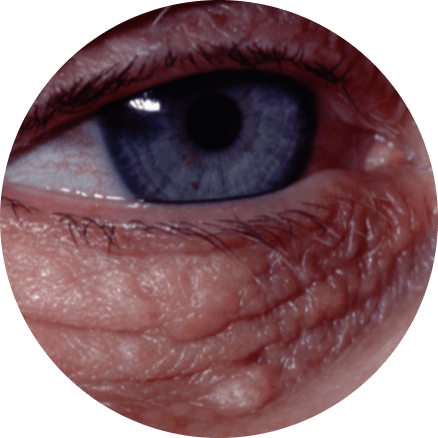
Sebaceous hyperplasia can appear on any part of the body, but it is most commonly found on the face, particularly on the forehead, cheeks, and nose. The condition is generally not painful or harmful, but it can be cosmetically bothersome. If you are experiencing any of these symptoms, it is important to consult a dermatologist for a proper diagnosis and treatment recommendations.
How is Sebaceous Hyperplasia Diagnosed?
Sebaceous hyperplasia is usually diagnosed through a visual examination by a dermatologist or a trained healthcare professional. The diagnosis is based on the appearance of the lesions, which typically present as small, yellowish bumps on the skin.
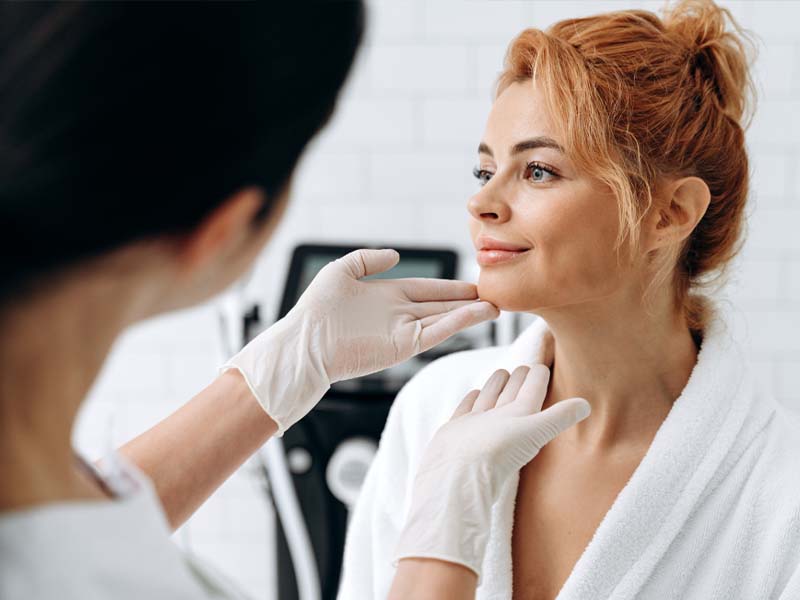
To confirm the diagnosis, a skin biopsy may be required in some circumstances. During a skin biopsy, a small sample of tissue is removed from the affected area and examined under a microscope.
Other possible diagnostic techniques include:
- Dermoscopy: This is a non-invasive technique that allows dermatologists to examine the skin using a special magnifying tool called a dermoscope. This can help identify specific features of the lesions that may be characteristic of sebaceous hyperplasia.
- Wood’s lamp examination: This is a type of examination that involves shining a special type of ultraviolet light onto the skin. This can help highlight the presence of sebum, which is the substance that clogs the sebaceous glands in sebaceous hyperplasia.
- Digital dermoscopy: This is a newer diagnostic tool that involves taking digital images of the skin using a special camera attached to a microscope. These images can then be analyzed using computer software to identify specific features of the lesions.
In some cases, a doctor may also order blood tests to rule out underlying conditions that may be contributing to the development of sebaceous hyperplasia.
Overall, a proper diagnosis is important to ensure that the right treatment plan is developed for the individual case.
Sebaceous Hyperplasia Photos
Sebaceous hyperplasia photos can be helpful for individuals who suspect they may have the condition or have been diagnosed with it. These photos can provide a visual representation of the characteristic appearance of sebaceous hyperplasia lesions, which can be helpful in identifying them. However, it’s important to note that not all lesions may appear identical and a healthcare professional may need to make a proper diagnosis. Sebaceous hyperplasia photos can be found online, but it’s recommended to consult with a skin dermatologist for a thorough examination and proper diagnosis.
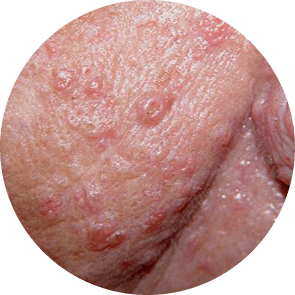
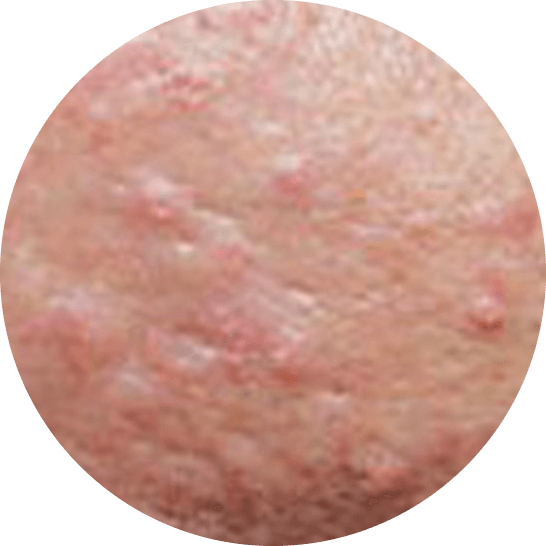
2. Treatment Options for Sebaceous Hyperplasia
Medical Treatments
Medical treatments for sebaceous hyperplasia are typically reserved for cases where the condition causes discomfort or is cosmetically bothersome. The most common medical treatments for sebaceous hyperplasia include:
- Topical Retinoids: These medications are derived from Vitamin A and work by promoting skin cell turnover, which can reduce the size and number of lesions. Examples include Tretinoin and Adapalene.
- Electrocautery: This procedure involves using a small needle or probe to deliver an electrical current to the affected area, which destroys the sebaceous gland and removes the lesion.
- Cryotherapy: This procedure involves freezing the affected area with liquid nitrogen, which destroys the sebaceous gland and removes the lesion.
- Laser therapy: This treatment uses a laser to target and destroy the sebaceous gland, which removes the lesion.
- Chemical Peels: Chemical peels use a chemical solution to remove the top layer of skin, which can reduce the appearance of sebaceous hyperplasia lesions.
- Microdermabrasion: This procedure uses a special device to remove the top layer of skin, which can help reduce the appearance of sebaceous hyperplasia lesions.
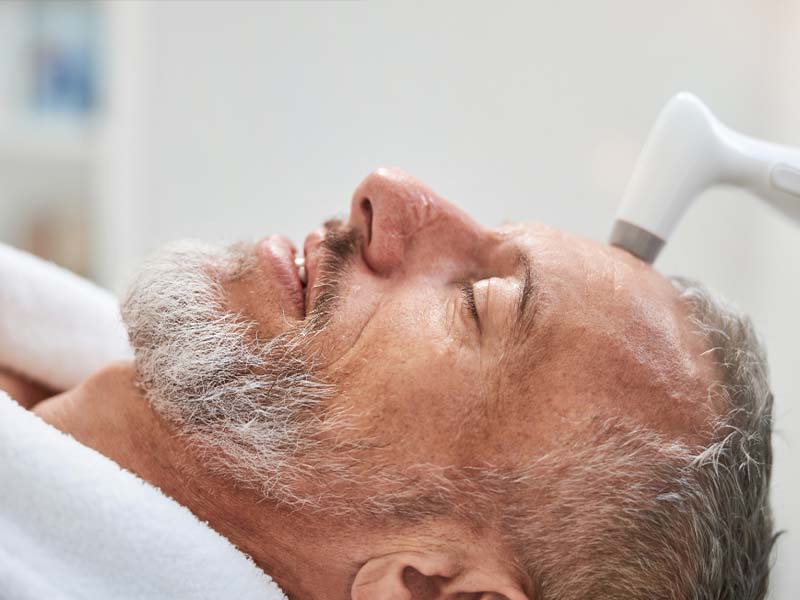
It’s important to note that medical treatments can have potential side effects, and it’s important to discuss the risks and benefits of each treatment option with a dermatologist before proceeding.
Sebaceous Hyperplasia Removal
Sebaceous hyperplasia can be removed using various methods, depending on the size and location of the lesions, as well as the patient’s preference and medical history. The removal of sebaceous hyperplasia can be done for cosmetic reasons or if the lesions are causing discomfort or irritation. Some common methods for removing sebaceous hyperplasia include:
- Electrodessication
- Cryotherapy
- Laser treatment
- Excision
It is important to note that removal of sebaceous hyperplasia does not guarantee that new lesions will not develop in the future. It is recommended to discuss the options and risks with a qualified healthcare professional before proceeding with any removal method.
Sebaceous Hyperplasia Laser Treatment
Sebaceous hyperplasia laser treatment is a popular medical procedure for reducing the appearance of sebaceous hyperplasia lesions. The laser used for this treatment is typically a CO2 or erbium laser, which vaporizes the affected tissue. The procedure is minimally invasive and is typically performed in a dermatologist’s office.
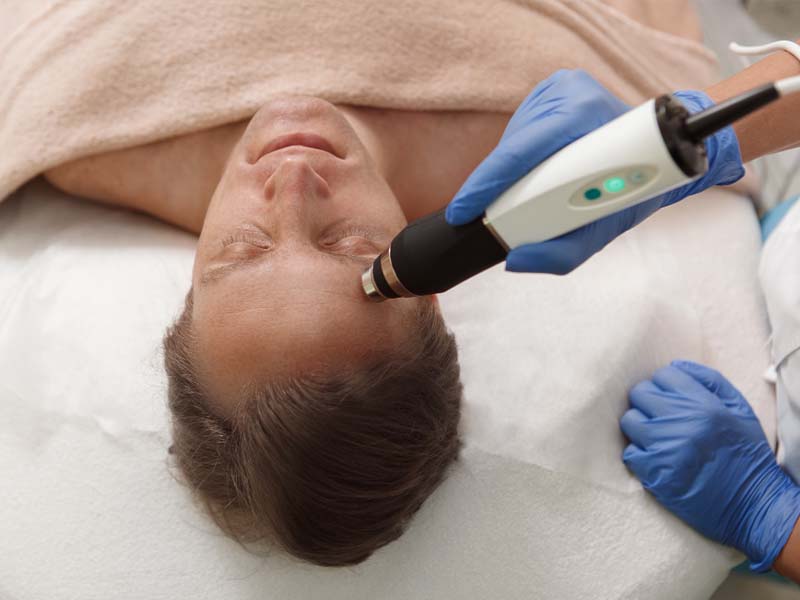
During the procedure, the laser is directed at the affected area, where it heats the tissue and destroys the overgrown sebaceous gland. The laser also promotes collagen production, which helps to fill in any depressions or scarring caused by the hyperplasia lesions. The treatment is generally well-tolerated, with minimal discomfort and a short recovery time.
However, it is important to note that laser treatment may not completely eliminate all lesions, and new ones may develop over time. Additionally, the procedure may not be suitable for all individuals, particularly those with darker skin tones, as there is a risk of hyperpigmentation or hypopigmentation. As with any medical treatment, it is important to discuss the risks and benefits with a dermatologist before undergoing the procedure.
Home Remedies
While medical treatments are the most effective way to treat sebaceous hyperplasia, there are some home remedies that may help reduce the appearance of lesions or prevent their development. These include:
- Tea tree oil: Diluted tea tree oil may help reduce inflammation and kill bacteria on the skin, which can be helpful in managing sebaceous hyperplasia.
- Apple cider vinegar: Applying diluted apple cider vinegar to the affected area may help exfoliate the skin and reduce the appearance of lesions.
- Aloe vera: Aloe vera gel may help soothe irritated skin and reduce inflammation associated with sebaceous hyperplasia.
- Green tea: Drinking green tea or applying it topically may provide antioxidant and anti-inflammatory benefits, which can be helpful for managing sebaceous hyperplasia.
- Vitamin A: Eating foods rich in vitamin A, such as carrots, sweet potatoes, and leafy greens, may help reduce the development of sebaceous hyperplasia lesions by regulating sebum production.

It’s important to note that while these remedies may help manage symptoms, they are not a substitute for medical treatment. Individuals with sebaceous hyperplasia should consult with a dermatologist before trying any home remedies.
Prevention Tips for Sebaceous Hyperplasia
Prevention is always better than cure. While there is no guaranteed way to prevent sebaceous hyperplasia, there are several measures that individuals can take to reduce their risk of developing the condition or to minimize its severity:
- Wear Sunscreen: Sebaceous hyperplasia can be triggered or worsened by exposure to sunlight. Wearing sunscreen with a high SPF can help protect the skin from UV radiation.
- Practice Good Skincare: Proper skincare can help prevent the development of sebaceous hyperplasia. This includes gentle cleansing, avoiding harsh skincare products, and keeping the skin moisturized.
- Avoid Picking or Squeezing: Picking or squeezing sebaceous hyperplasia lesions can cause inflammation and scarring. It can also lead to the spread of the condition.
- Stay Hydrated: Drinking plenty of water and staying hydrated can help keep the skin healthy and prevent the development of sebaceous hyperplasia.
- Consult a Dermatologist: If you are prone to developing sebaceous hyperplasia or have a family history of the condition, it is a good idea to consult a dermatologist. They can recommend preventive measures and monitor any existing lesions to catch any changes early.

Final Thoughts
In conclusion, sebaceous hyperplasia is a common and generally harmless skin condition, but it can be a cosmetic concern for some people. Factors like genetics, age, hormonal changes, sun exposure, and skin damage can contribute to its development, and triggers like sunlight, certain medications, and poor skincare can worsen the condition or lead to the formation of new lesions.

If you are experiencing symptoms of sebaceous hyperplasia, it is important to consult a dermatologist for proper diagnosis and treatment recommendations. Remotederm online dermatology consultation is a convenient and accessible option for those seeking expert advice on managing their sebaceous hyperplasia. By identifying and avoiding triggers, individuals with sebaceous hyperplasia can reduce the frequency and severity of outbreaks, and Remotederm can help with this process.
FAQs
1. Can sebaceous hyperplasia lead to skin cancer?
Sebaceous hyperplasia is a benign skin condition and is not known to lead to skin cancer. However, it is important to have any new or changing skin lesions checked by a dermatologist to rule out the possibility of skin cancer.
2. Can sebaceous hyperplasia be cured?
There is no cure for sebaceous hyperplasia, but with proper management and treatment, the condition can be effectively controlled. It is important to work with a healthcare professional to develop a treatment plan that is tailored to your individual needs and concerns.
3. Is sebaceous hyperplasia contagious?
No, sebaceous hyperplasia is not contagious. It is a benign condition that does not spread from person to person.
4. Is it safe to remove sebaceous hyperplasia at home?
No, it is not safe to remove sebaceous hyperplasia at home. Attempting to remove the bumps yourself can lead to infection, scarring, and other complications. It is best to seek treatment from a qualified dermatologist.
5. How long does it take for sebaceous hyperplasia to go away?
Sebaceous hyperplasia is a chronic condition that does not typically go away on its own. However, with proper treatment, the symptoms can be managed and the appearance of the bumps can be reduced. The length of treatment will depend on the severity of the condition and the chosen treatment method.

2 comments
can I apply makeup on these bumps ,makeup apparently makes these bumps look smaller .
Hi there! While makeup can help to conceal the appearance of these bumps, it is important to note that it does not treat the underlying condition. However if you want to use makeup, it’s important to choose makeup products that are non-comedogenic and won’t clog your pores. Clogging the pores can potentially worsen sebaceous hyperplasia or lead to other skin issues. Additionally, excessive use of heavy makeup or improper removal may further irritate the skin and exacerbate the condition.
It is recommended to consult with a dermatologist for an accurate diagnosis and appropriate treatment options for sebaceous hyperplasia.